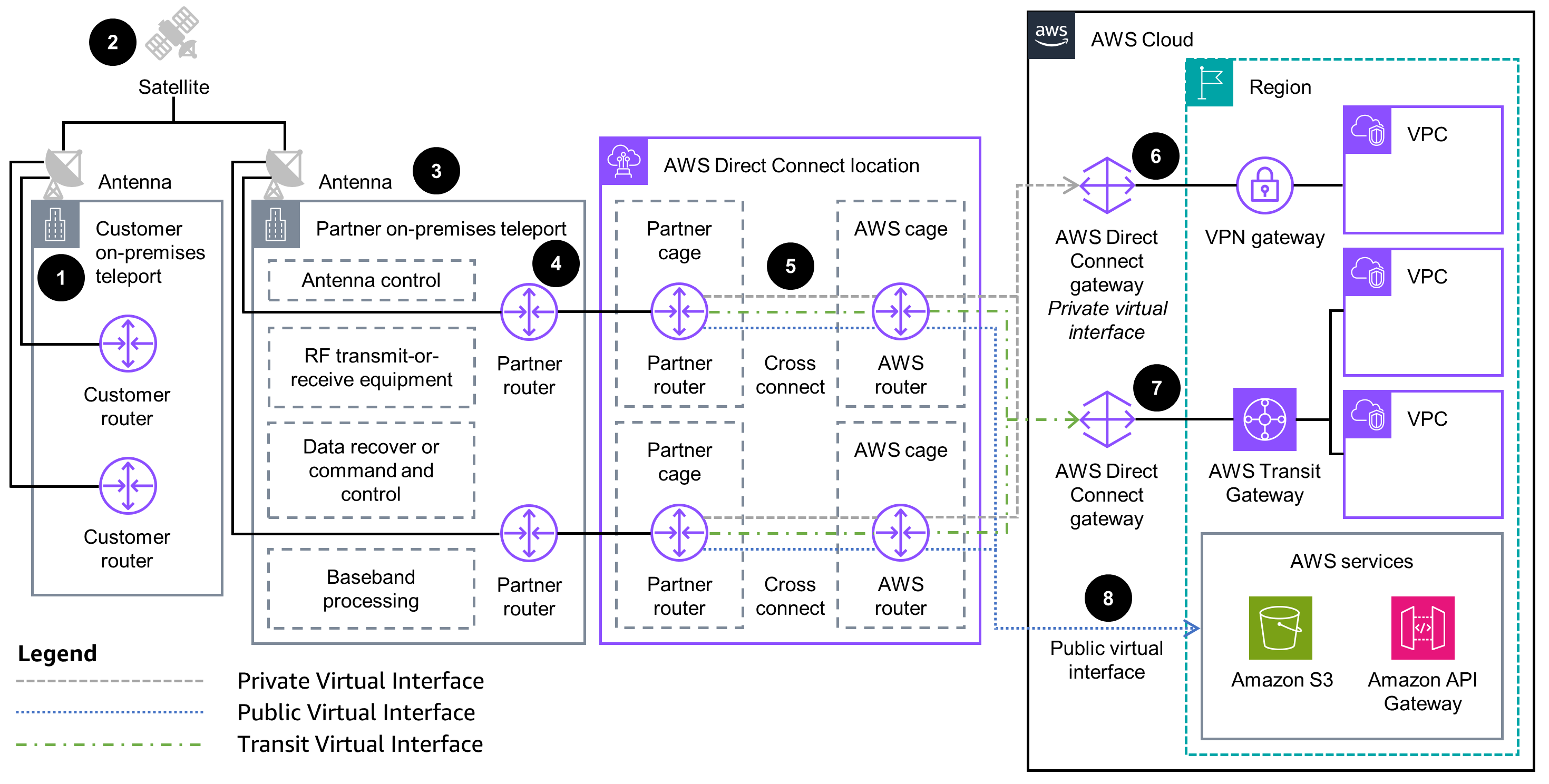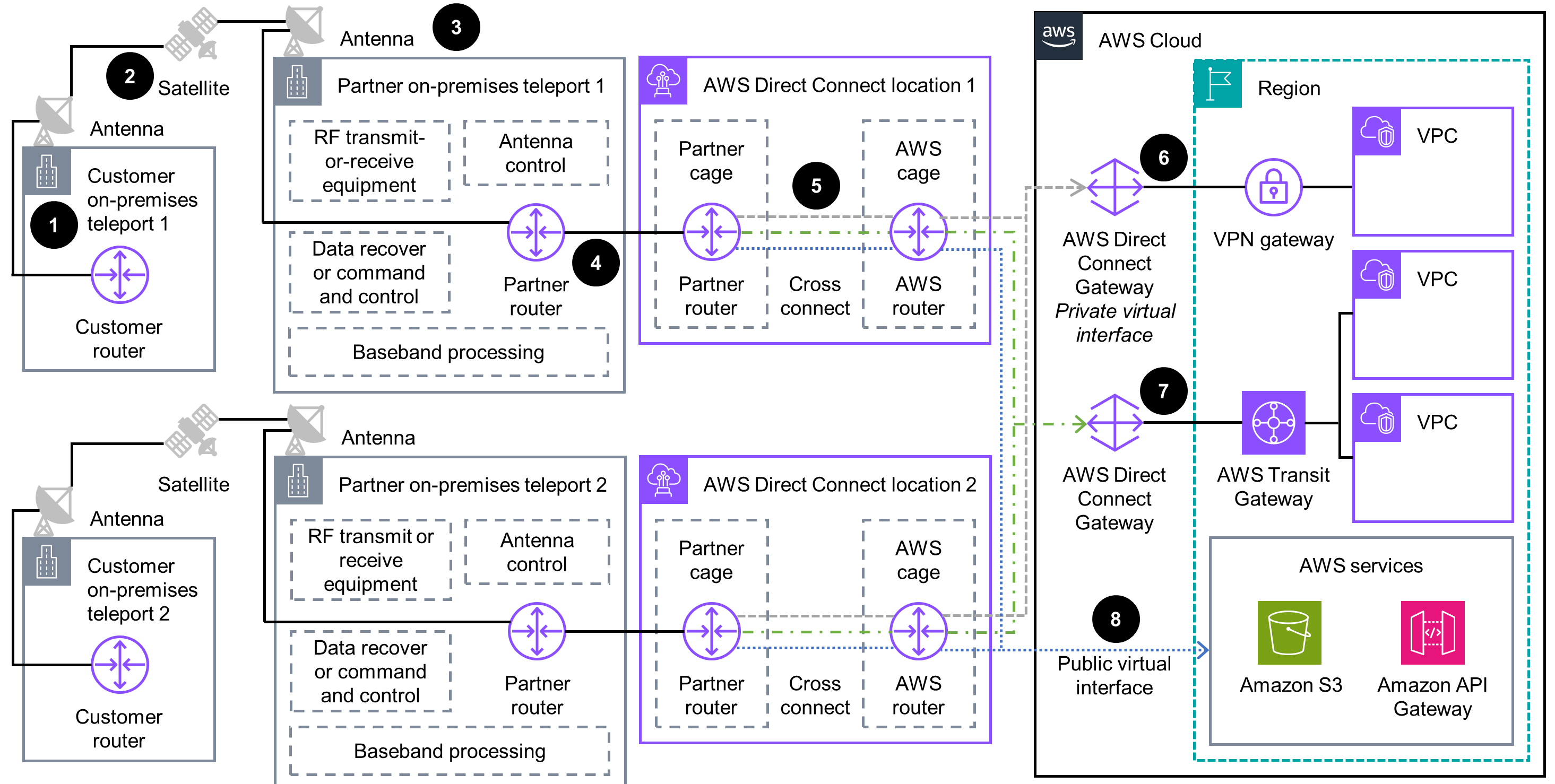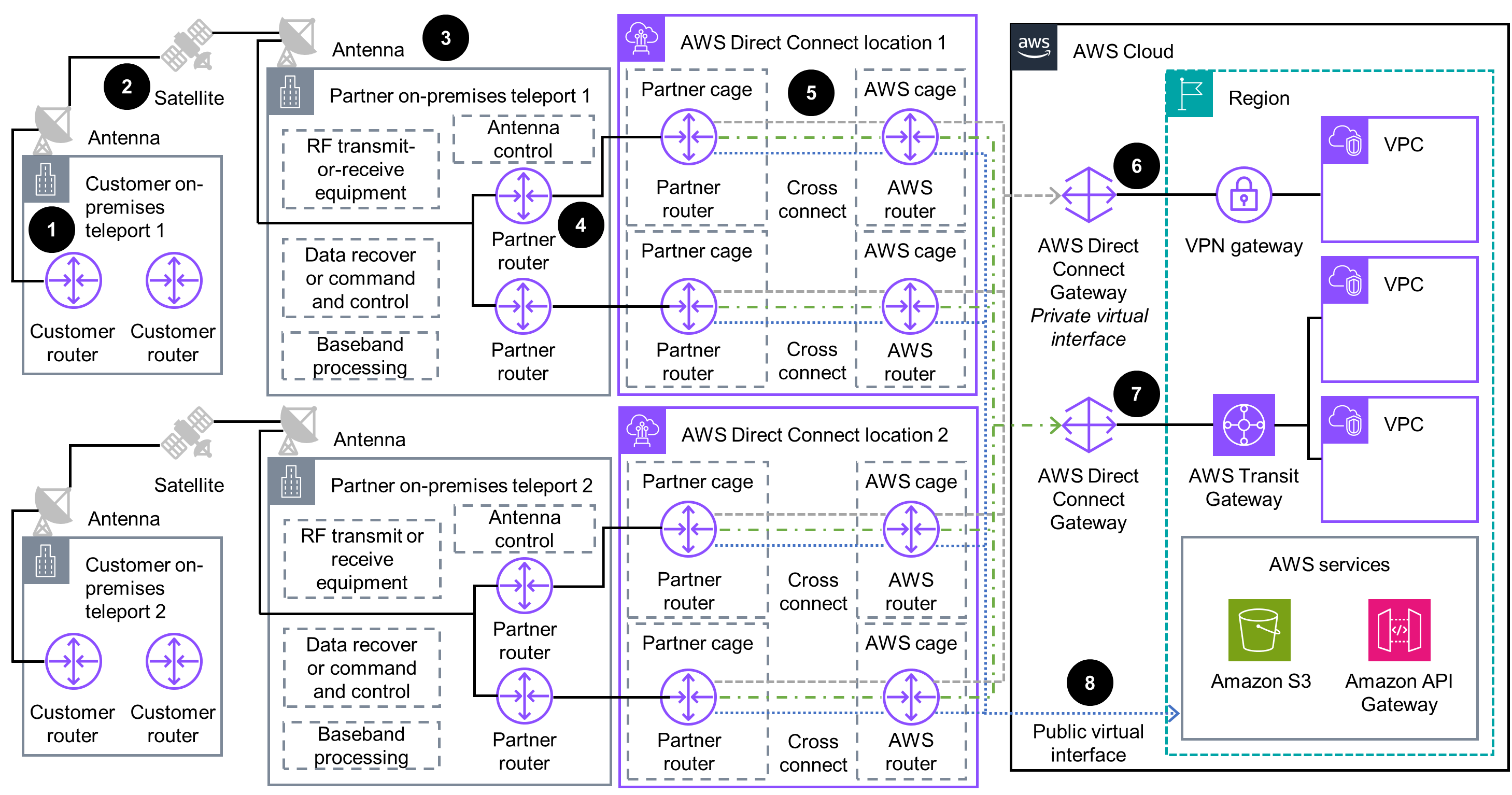Guidance for Using a Satellite Infrastructure for Resilient AWS Direct Connect Networking
Overview
This Guidance shows how you can use a satellite infrastructure for critical and noncritical workloads with multiple resiliency types, such as development and test resiliency, high resiliency, or maximum resiliency. By using AWS Direct Connect in conjunction with a satellite infrastructure and the best practices outlined here, you can establish resilient network connections between your AWS Virtual Private Cloud (VPC) and your on-premises infrastructure. This Guidance helps you extend your access to AWS resources in a reliable, scalable, and cost-effective way.
How it works
Development and Test Resiliency
This architecture diagram shows how to achieve development and test resiliency for noncritical workloads by using separate connections that terminate on separate devices in one location.

High Resiliency
This architecture diagram shows how to achieve high resiliency by having one connection terminating at multiple locations.

Maximum Resiliency
This architecture diagram shows how to achieve maximum resiliency by separating connections terminating on separate devices in more than one location.

Well-Architected Pillars
The architecture diagram above is an example of a Solution created with Well-Architected best practices in mind. To be fully Well-Architected, you should follow as many Well-Architected best practices as possible.
Disclaimer
The sample code; software libraries; command line tools; proofs of concept; templates; or other related technology (including any of the foregoing that are provided by our personnel) is provided to you as AWS Content under the AWS Customer Agreement, or the relevant written agreement between you and AWS (whichever applies). You should not use this AWS Content in your production accounts, or on production or other critical data. You are responsible for testing, securing, and optimizing the AWS Content, such as sample code, as appropriate for production grade use based on your specific quality control practices and standards. Deploying AWS Content may incur AWS charges for creating or using AWS chargeable resources, such as running Amazon EC2 instances or using Amazon S3 storage.
Did you find what you were looking for today?
Let us know so we can improve the quality of the content on our pages